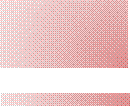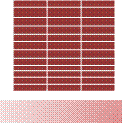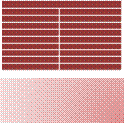
Structural Design for the Construction Management
Teaching Facility

Ashley
Wilson, Cheryl Woodlock, Karlis Yazzie, Cordell Yazzie

Department of Civil Engineering, Northern Arizona
University

Design Loads

Computerized Drafting

Design of Steel
Members

Acknowledgements

Site Location
Abstract


Cost Estimate

In order to draft
the Construction Documents the team used a program from Autodesk called Revit.
This program is becoming more recognized in industry because it works with
other Building Information Modeling (BIM) programs.

Cut and Fill
Estimate

The Construction Management Lab Facility
is located in Flagstaff Arizona on Northern Arizona University campus. The building will be built behind the
College of Engineering within the Onsite Wastewater Treatment Facility, that
is on S. Pine Knoll Rd. The building
will constructed within a 52 ft by 52 ft footprint.

EGR Design

References

John
Tingerthal- Professor and Client Contact for the Construction Management Department
•AutoCAD® Civil 3D® Software. (2007).
•AutoCAD® Software . (2009). Student Version .
•Google Earth. (2009, January). Retrieved from
www.earth.google.com
•Hale,
M. A. (2002). Minimum Design Loads for
Buildings and Other Structures, SEI/ASCE 7-02 (ASCE
Standard). Reston: American Society
of Civil Engineers. Excluding
chapters five, ten and the Appendices.
•International
Code Council, Inc. (2006). 2006
International Building Code. Country
Club Hills: Delmar Cengage Learning.
Indianapolis: Wiley Publishing, Inc.
•Phillip
R. Waier, P. (2006). RSMeans Building
Construction Cost Data 65th
Annual Edition. Kingston: R.S. Means Company.
•Revit® Architecture Building
Design Software. (n.d.). Student Version .
•RISA - 3 D Structural
Engineering Software. (n.d.). Student
Version 8.0 .

The
Construction Management (CM) department at Northern Arizona University (NAU)
is currently in need of laboratory space for the masonry and concrete
classes. Due to lack of space, the CM
students currently attend labs at other facilities off the premises of the NAU
campus. Our team’s task is to conduct a
complete structural analysis and design for the components that will comprise
the building while keeping various constraints in mind. The team will be evaluating a steel moment
frame connection, cross-bracing and diaphragm systems. Computer programs,
including Risa 2D, Revit and AutoCAD Civil 3D, will be utilized to provide a
working set of drawings. The CM department has requested that we provide the
loads, cost analysis, and structural components needed to complete their final
design and implementation of building a teaching facility.



Figure1: Current Laboratory area in Engineering Parking Lot.
TYPE
DESIGN LOAD
METHOD
ROOF DEAD LOAD
13 psf
Addition of all weights roof elements
DRIFTED SNOW LOAD
71 psf
Procedure outline in ASCE 7-05
FLAT ROOF SNOW LOAD
43 psf
Procedure outline in ASCE 7-05
ROOF LIVE LOAD
20 psf
Minimum per 2006 IBC
SEISMIC LOADS
8.38 kips
Procedure outline in ASCE 7-05
WIND LOAD (90 mph, 3 sec gust)
Method 1
ZONE A
25.07 psf
Method 1
ZONE B
3.89 psf
Method 1
ZONE C
18.22 psf
Method 1
ZONE D
4.2 psf
Method 1
UPLIFT
13 psf
Method 1
Design
Loads were used in Allowable Stress Design (ASD) basic load combinations. The
basic load combination, D+H+F+ (Lr or S or R), produced the most unfavorable
effect on most of the roof members.
Table
1: Developed Design Loads

Construction Cost Breakdown
General Requirements
$34,560
Metals
$49,837
Wood
$3,600
Thermal and Moisture Protection
$16,251
Openings
$23,053
Finishes
$32,361
Earthwork
$1,088
Total
$160,750
Total with Contingency
$180,040
The
construction cost estimate was preformed using the RS Means method and calling
suppliers. This estimate includes labor, material, equipment, and a 12%
contingency for a total of $180,040.
The
engineering design cost estimate included a project manager, two staff
engineers, and a Revit technician. The total engineering design cost estimated
was $33,060.
Table
2: Construction Cost Breakdown

All
of the steel members within the roof were designed using the
Allowable Stress Design (ASD) method.
All simple span beams were evaluated for moment, shear,
and deflection criteria by hand.
All roof beams were then checked against computer models in
Enercalc.
All
moment frame beams were designed using computer programs RISA 2D
and 3D. Throughout the building we have
a total of 3 moment frames transferring all design loads on the building to the foundation.
All
but one of the steel columns in the building were designed within
moment frames. Our team only evaluated
this column by hand and checked our results against
Enercalc.




Earthwork
will be required around the perimeter of the existing foundation. The ground elevation from the North-West and
South-East corners are roughly 2 ft higher than the North-East corner.
The natural soil will be cut at a 2:1 slope and brought to
the North-East fill area to level out the site then graded to match
existing ground.

Figure
6: AutoCAD Civil 3D, Cut and Fill
Figure
3: Risa 3D, The Deformed Shape of Moment Frame 245.



Engineering
Building

Proposed Site
Location
Figure 2: Site Location Map obtained from Google Earth 2009.